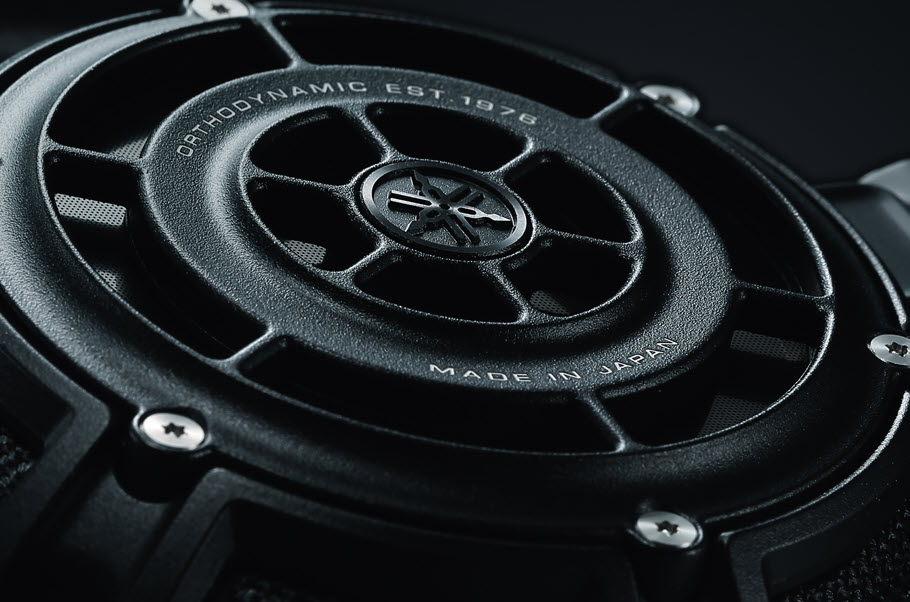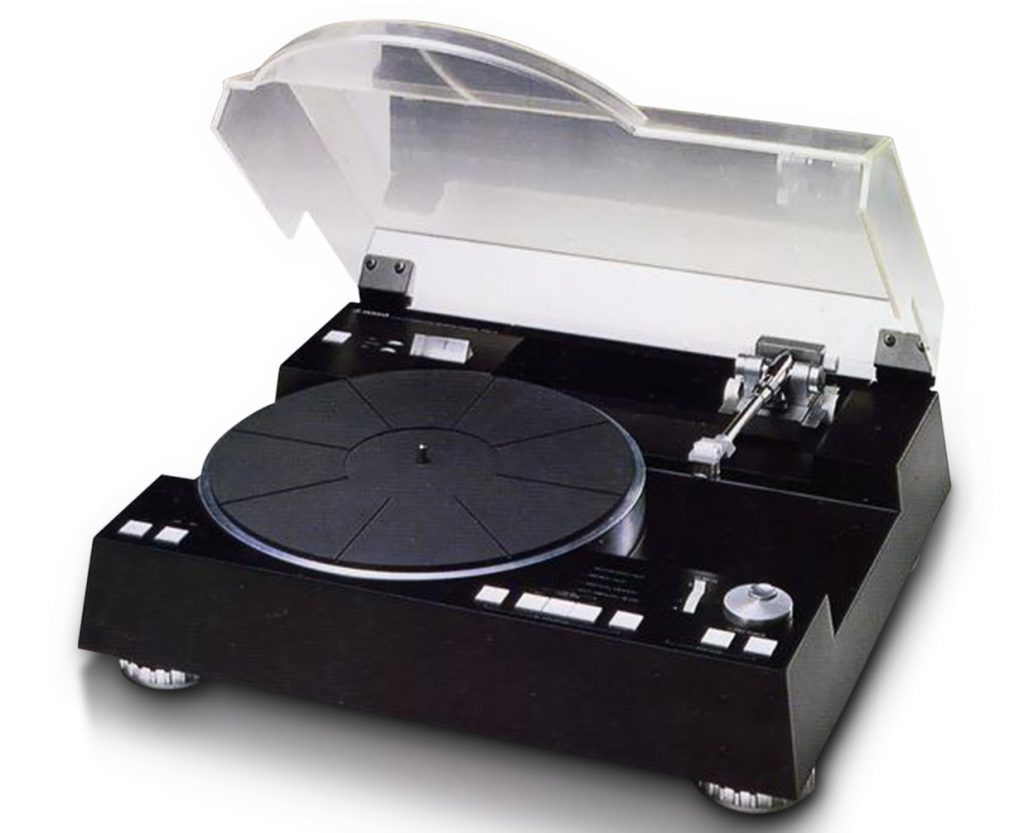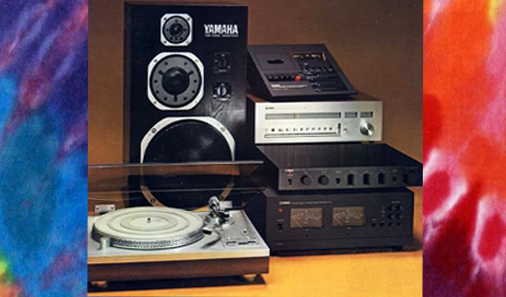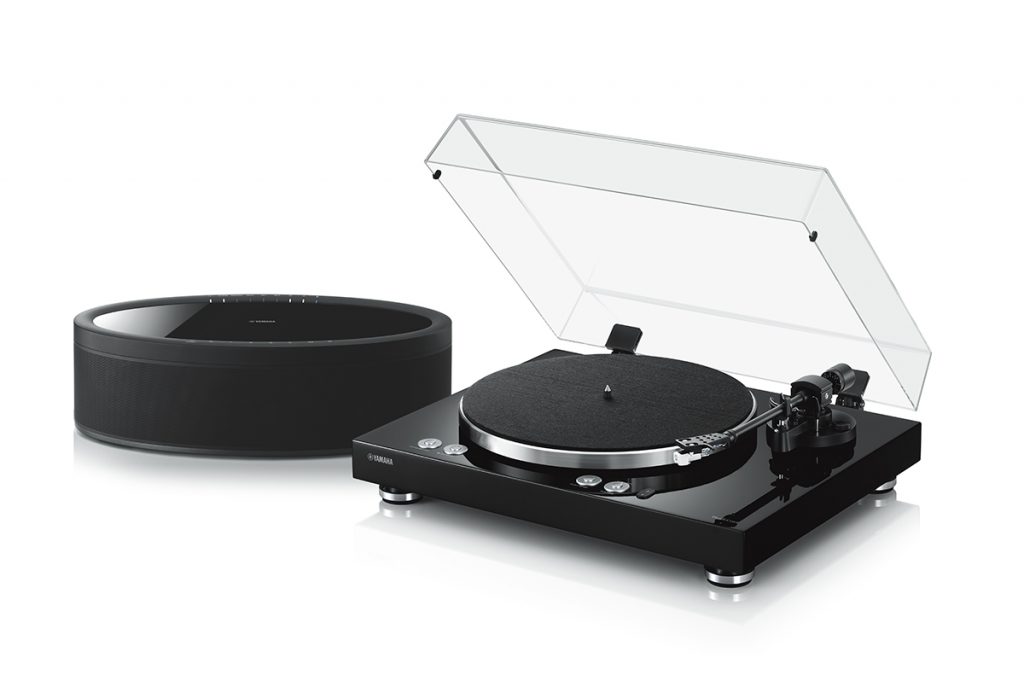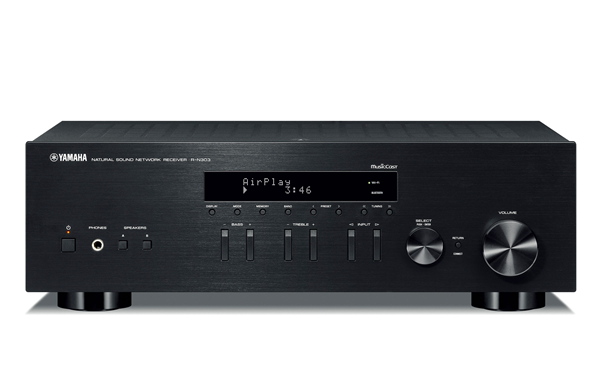Cult Classics, Part 3: Vintage Yamaha Gear of the 1990s
The decade that set the stage for the future of home theater.
The 1990s were filled with technological advances and forgettable fashion. (Remember jackets with rolled-up sleeves?) From the first iMac® to the pager to AOL (LOL), the ’90s were clearly a mixed bag of pop culture priorities. But it was also the true beginning of the age of home theater.
The foundations of what home surround sound could be were laid down in the 1990s with a clear trajectory towards what we enjoy today. The combination of audio and video in a single high-performance entertainment centerpiece (the AV receiver) came about as a result of these breakthroughs — and that’s not all. Here are a few of the biggest contributions Yamaha made to home audio in the 1990s.
RX-V850 AV Receiver (1991)
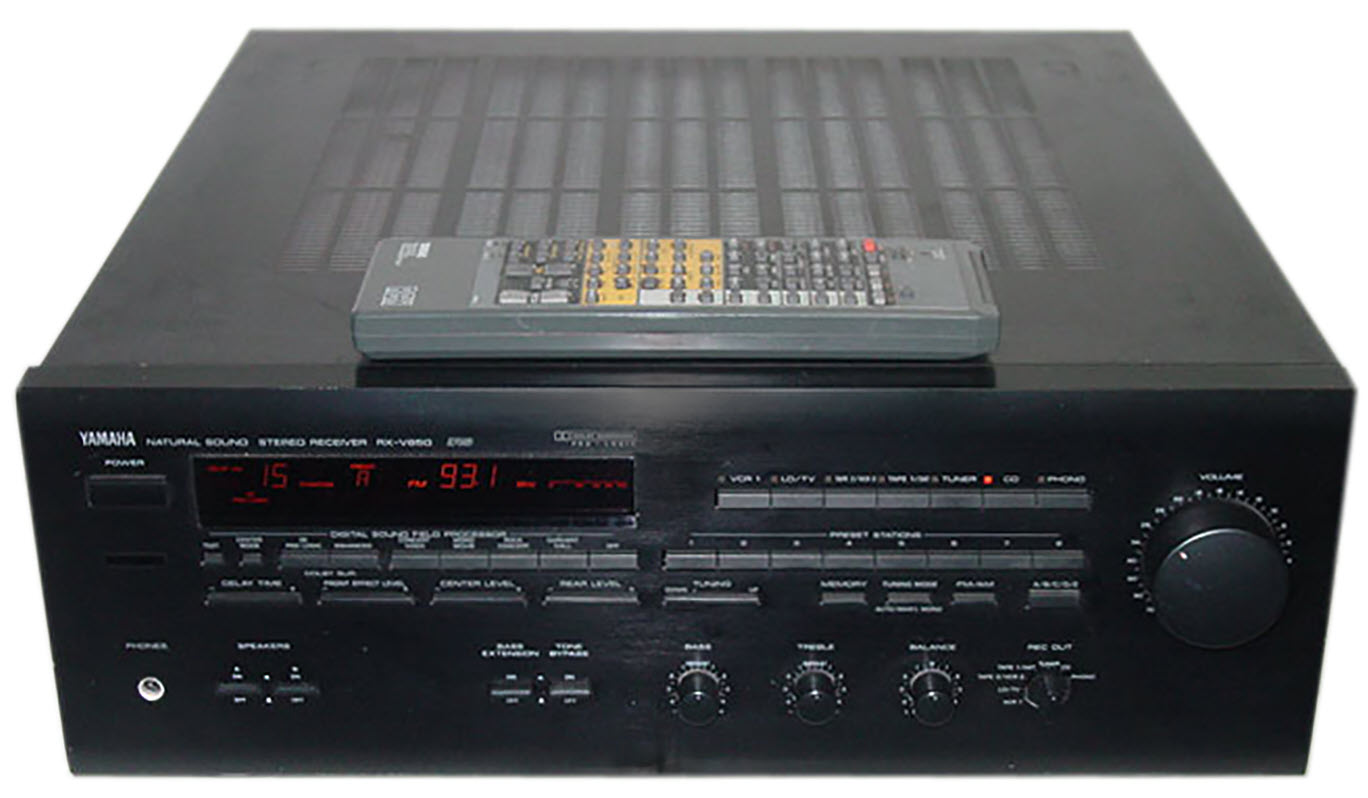
The RX-V850 and its bigger brother, the RX-V1050, were the first AV receivers to feature Digital Sound Field processing, or what has become known as Yamaha CINEMA DSP. Home theater sound could now rival the experience found in a commercial theater, and surround sound processing tailored to enhance the movie viewing experience at home became a reality.
The engine that made this possible was the Yamaha YSS203 digital surround decoder chip. The YSS203 marked a significant advancement in the evolution of home theater performance. Its digitally controlled steering system offered much better surround sound directionality and realism than the commonly used analog decoders of the era. In addition, a Dolby® Pro Logic® Enhanced surround mode introduced enveloping DSP processing, making your living room sound more like a movie theater.
The RX-V850 was one of the most popular products the company has ever produced, setting the bar high for all Yamaha AV products that followed.
GT-CD1 CD Player (1991)
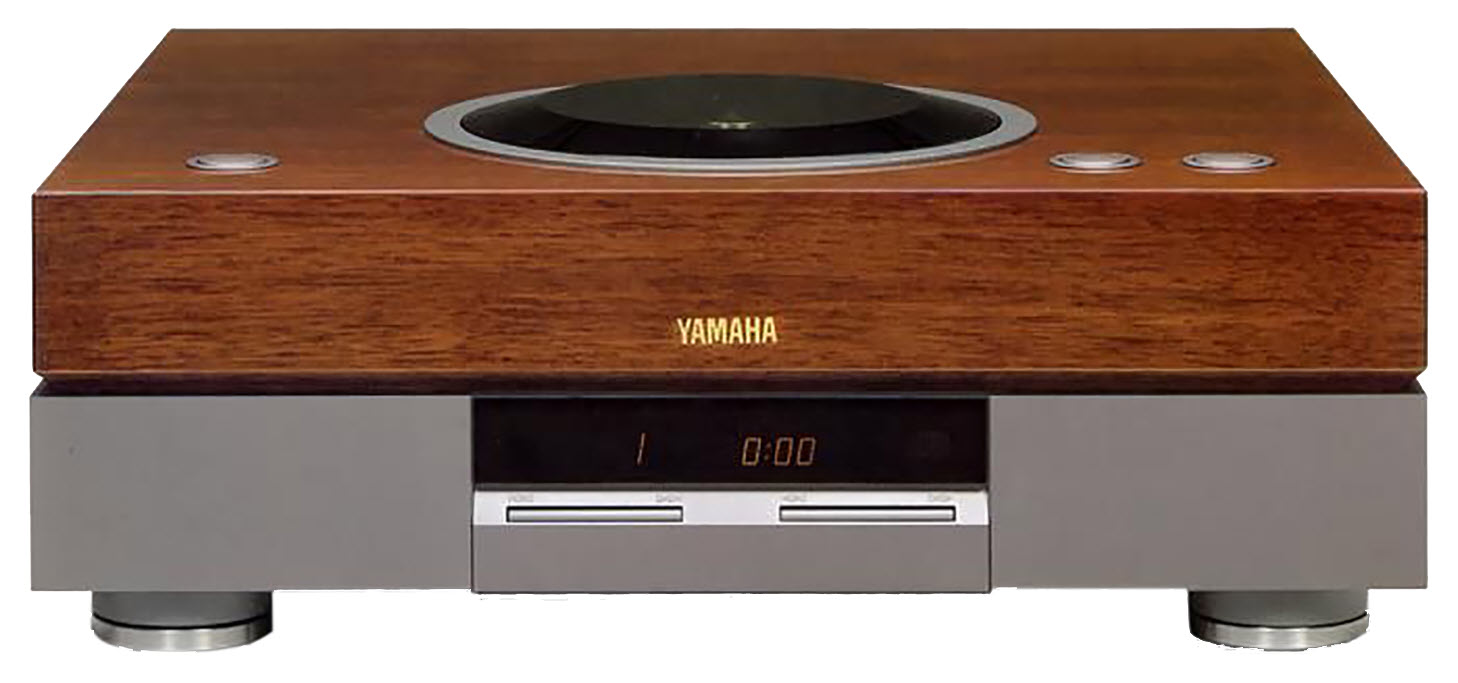
Compact Disc players arrived in the early 1980s and had an entire decade to mature with improvements to error correction, laser tracking reliability and explorations into digital over-sampling for better sound. Yamaha engineers wanted to make a statement about the advanced audio capabilities of their CD players. For inspiration, it was decided to revisit the GT (Gigantic and Tremendous) concept from a decade-old product: the GT-2000 turntable.
The GT-CD1 symbolized the ingenuity and innovation in the history of Yamaha CD players. Its chassis relied on the forces of gravity to provide mechanical stability. Weighing in at over 50 pounds, every element of the machine was solidly coupled to the massive chassis, eliminating the need for the “floating” mechanism employed by most CD players of the era.
The motorized top-load glass lid gave an impression of what to expect, and setting a disc on the spindle and placing the heavy machined brass clamp added a tactile feeling of solidness. What’s more, the DAC (Digital-to-Analog Converter) in the GT-CD1 featured a unique configuration of independent left and right I-PDM system 1-bit DACs. Complementing the standard RCA and digital output connections was a pair of balanced XLR connectors, a rarity at the time.
CDC-605 / CDC-705 / CDC-805 CD Changer (1990)
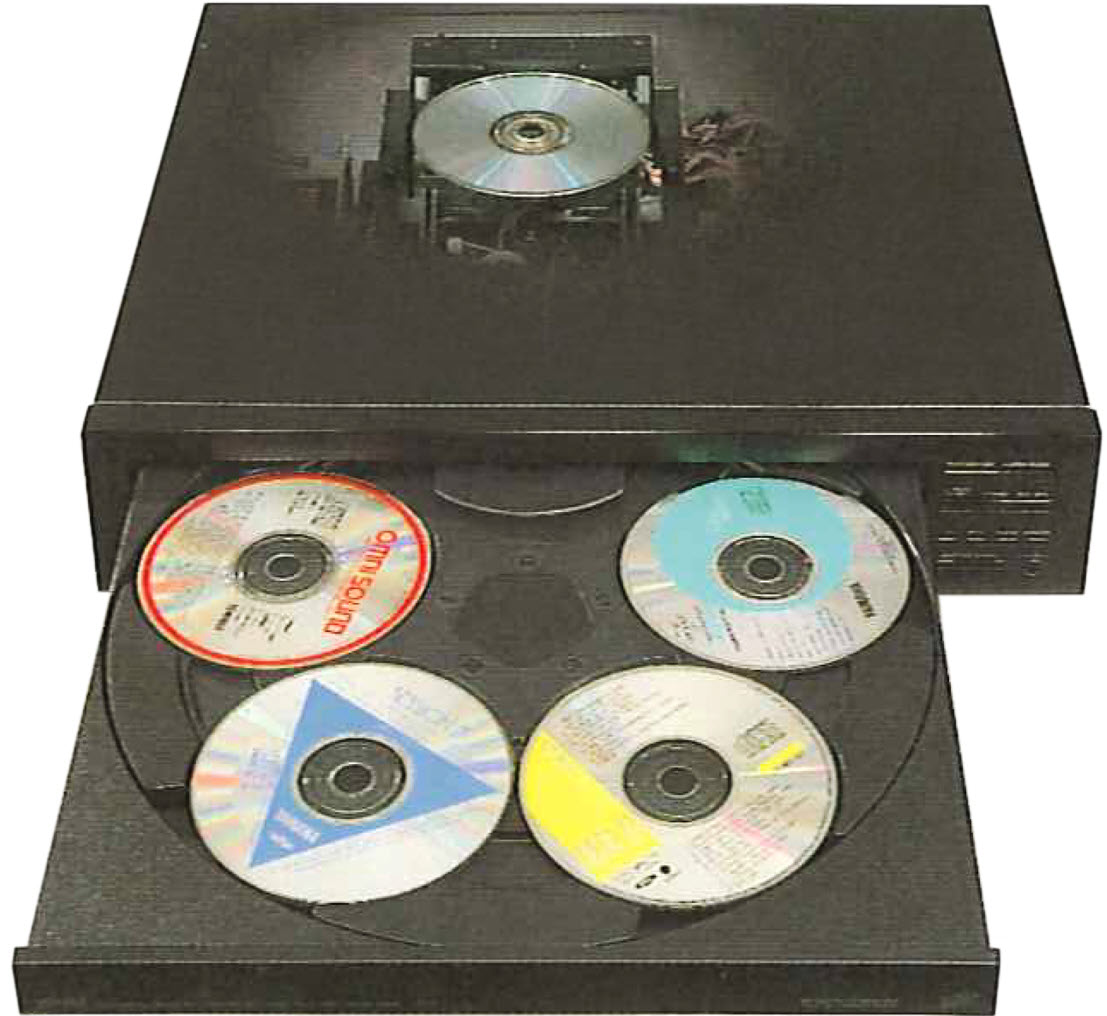
With the popularity of CD players on the rise in the early ’90s, it was time to add more — more discs, that is.
Extending the music enjoyment experience beyond the 64-minute capacity of a single standard CD was a challenge for the industry. Manufacturers came up with many creative ideas, including different types of cartridges holding five, six and even 10 discs, as well as juke box-type changers that held 100 discs or more. The Yamaha CDC-605, CDC-705 and CDC-805 family all offered a unique spin on this concept, while continuing the theme of “Natural Sound.”
The Yamaha-patented PlayXchange mechanism was clever in that it could provide uninterrupted music for long periods, along with greatly improved tracking performance. This system consisted of two independent mechanisms in a single chassis. The laser/disc motor module was independent of the 5-disc loading tray mechanism, thus eliminating the common problem of vibration from the large loading tray interfering with the precision laser playback.
What intrigued most users, however, was the ability to change out four of the discs while the fifth one was still playing. Swapping out discs would no longer bring the party to a standstill as everyone waited for the new music to be physically loaded into the machine. This unique feature was a staple of Yamaha multi-disc players for almost 30 years.
MX-1 Power Amplifier (1993)
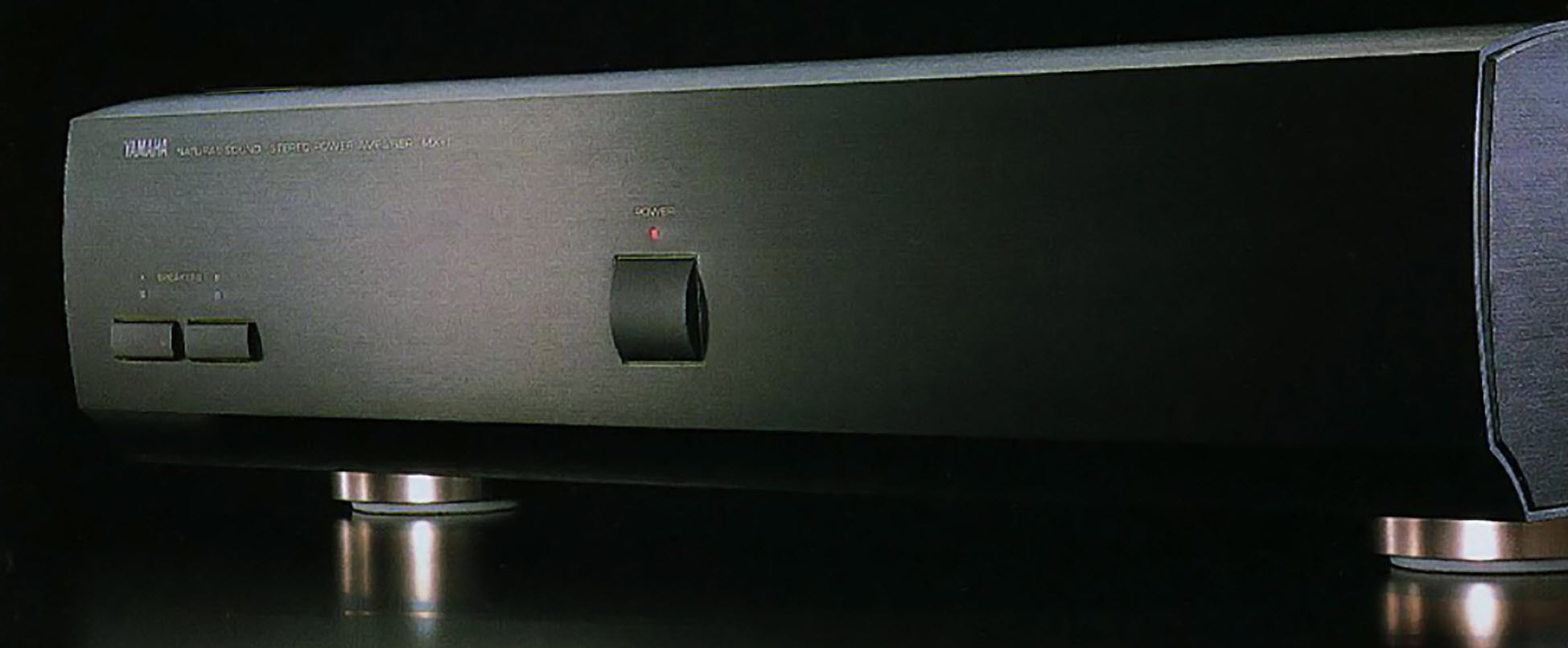
Throughout the 1980s, Yamaha designed some very large and boldly designed power amplifiers. The MX-1 had a far more stylized look, with its thinner profile and smoothly curved front surface. But don’t let the mild look fool you into thinking this was a wimpy amplifier: At 240 watts per channel, there was plenty of power to drive any speaker system available.
More than raw power, the amplifier topography was built on patented Hyperbolic Conversion Amplification (HCA) circuity. The creative design of the HCA amplifier stage resulted in Class A sonic quality with the high power and efficiency of a Class AB amplifier.
Because of all the excitement being generated by the new surround sound technologies being rolled out in the rest of the industry at the time, these high-performance amps kind of flew under the radar. For that reason, if you find one of these on the secondhand market, consider yourself lucky to have unearthed a true gem.
KPA-501 Karaoke Amp (1996)

We can’t talk about audio in the ’90s without touching on Karaoke mania. Busting out a Karaoke machine during get-togethers with friends was guaranteed to elevate the status from hangout to full-blown party. Having a quality Yamaha product to use made it even better.
The KPA-501 was built on the foundation of a Hi-Fi two-channel integrated amplifier, but its sophisticated DSP capabilities were leveraged to add quality effects and all the features needed for the job of making you sound good. Besides standard reverb and delay on the two microphone inputs, its Digital Super Surround (DSS) feature added several modes of virtual surround sound. Now your singing was more than effected, it was enveloping your listeners too!
The original marketing material suggested that “the KPA-501 will make you sound so good, you’ll want to hook up a cassette deck or VCR and record yourself singing.” Could this have been what tamed the growth of Karaoke at home? Playing back recordings from the previous night’s revelry may have been a little too revealing of some singer’s limited talents.
CDV-W901 LD/CD/Karaoke Player (1996)

This was your last chance to grab a LaserDisc™ player from Yamaha. The LD format had been the king among videophiles for its superior picture and sound quality for almost 20 years, but the DVD was on the horizon, and the new format looked like a promising replacement. However, many enthusiasts had amassed large libraries of LaserDiscs and wanted one last new machine to keep enjoying their sizable collections before moving on to the future.
Knowing that this was getting to the end of the LD format, Yamaha spiced up the CDV-W901 with a full set of Karaoke features in order to appeal to a broader audience, along with all the bells and whistles that a LaserDisc enthusiast could ask for. Perhaps the most appealing of these was its ability to play both sides of an LD without having to manually flip the disc over. (LaserDiscs, like vinyl records, had content on both sides.) This was accomplished by utilizing a laser mechanism that was mounted on a pair of U-shaped rails that looped from under the disc around to the top. When the first side was finished playing, there was a minute or so pause as the laser traversed around to the top of the disc and then continued playing.
DVD-1000 DVD Player (1997)

By the late 1990s, the DVD had arrived and the “Be Kind and Rewind” signs posted at your local video rental shop became a thing of the past.
The DVD player represented a gigantic leap forward in the evolution of home theater. Up until then, VHS was the format for the masses. But with DVD, it was now possible to watch a full movie in stunning 480i resolution … and without having to rewind a tape when you were done. While progressive scan 480p players were still a few years away, skipping to things called “chapters” was a new experience that attracted many users. And besides the upgrade in video quality, the capability of hearing discrete 5.1 digital soundtracks in your home was now a reality.
By today’s standard, it was kind of primitive, but in the 1990s the performance from the DVD-1000 and other DVD players of the era blew the doors off VHS and put the final nail in the coffin of the aged LaserDisc format. Technologies learned in the development of the DVD format are still with us today as we enjoy digital video from Blu-ray discs and online streaming content providers.
DSP-A1 DD/DTS Amplifier (1998)

The DSP A-1 was the first amplifier to incorporate both Dolby Digital® and DTS audio decoding. This made it a must-have product for the early adopters of the era, and it was equally popular with the casual AV enthusiast.
Although new AV formats were emerging rapidly, legacy formats were still widely used. For that reason, the DSP-A1 was loaded with inputs and outputs, such as five inputs for video sources, including S-video switching and accommodation for two video recorders. There were also five dedicated audio connections (including a phono preamp), and lots of optical and digital connections as well — even a built-in AC-3 RF decoder for Dolby Digital-encoded LaserDiscs. This integrated amplifier had it all!
The DSP-A1 also provided seven channels of onboard amplification. Five of the channels were for the 5.1 playback of Dolby Digital and DTS formats, while the remaining two were dedicated to front presence speakers used with Yamaha CINEMA DSP. Available in black, silver and gold finishes, the DSP-A1 succeeded in bridging the gap between new and legacy formats without compromising the performance of either.
The Yamaha audio products of the 1990s added numerous refinements to legacy formats and technologies while creating bold new directions pointing to where the industry was heading. Despite the pop culture misfires of other ’90s staples, these AV products proved it was a good time to enjoy home entertainment and be at the crossroads of so many exciting developments.
Check out these related blog articles:
Cult Classics, Part 1: Vintage Yamaha Gear of the 1970s
Cult Classics, Part 2: Vintage Yamaha Gear of the 1980s
The History of Yamaha AV Receivers
What is an Integrated Amplifier?
Click here for more information about Yamaha AV receivers.
Click here for more information about Yamaha Hi-Fi components.
Click here for more information about Yamaha speakers.










